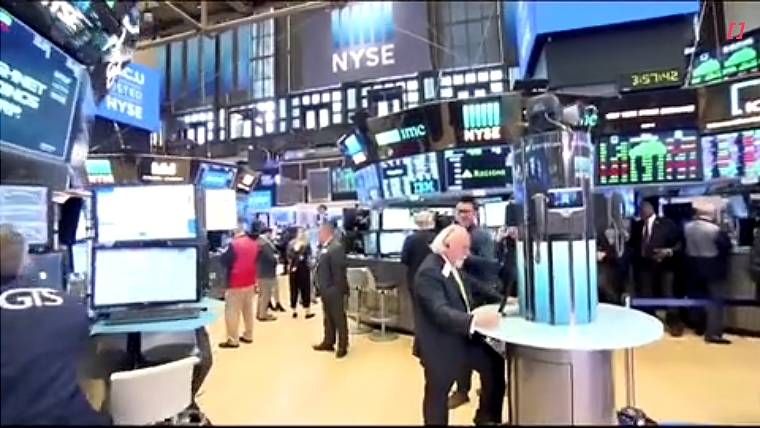
Stronger than expected US economic data overnight drove higher US rates, as the market pared scope for easier monetary policy, and broad gains in the USD. US equities are weaker for the third successive day. The NZD lurched below technical support of 0.58 while NZD cross movements have been contained.
We weren’t expecting second-tier US economic data releases to be market moving, but they were stronger across the board, providing a consistent message that the US economy was humming along quite nicely despite prevailing heightened policy uncertainty. The third estimate of Q2 GDP, durable goods orders, trade, jobless claims and existing home sales data were all stronger than expected.
GDP for Q2 was revised up five-tenths to an annualised 3.8%, following the 0.6% contraction in Q1, driven by an upgrade to consumer spending on services, so private consumption now shows respectable growth of 2.5%, from 1.7%. The last reading of the Atlanta Fed’s GDPnow estimated growth of 3.4% in Q3, although consensus estimates are below that.
Durable goods orders surged 2.9% m/m in August, driven by aircraft orders, but underlying orders were robust as well, with the ex-transportation figure up 0.4% m/m and signs of broadening expansion of business investment. The trade deficit for August was about $10b smaller than expected, at $85.5b, on lower imports and net trade should now only make a small negative contribution to Q3 GDP.
Initial jobless claims fell 14k last week to 218k, their lowest level since mid-July, the figures normalising back to respectable levels after recent distortions in the data that had inflated the figures. The data suggest only moderate layoffs and underlying resilience of the labour market. Existing home sales fell less than expected, nudging down just 0.2% m/m in August.
The broad array of stronger than expected data has seen the market trim expectations for further Fed easing, with 21bps priced for the next meeting and a cumulative 39bps for the two remaining meetings this year. The 2-year Treasury yield is up 6bps to 3.66% while the 10-year rate is up 2bps to 4.17%, after reaching an overnight high of 4.20%.
Soon the market might not have to contend with stronger data as there won’t be any releases! The 30 September deadline is approaching without a funding agreement signed off by Congress. Without this in place, the federal government will shut down from 1 October, resulting in furloughs for federal workers, including those who compile official data. This could affect the release of next Friday’s key non-farm payrolls report. The last government shutdown of this nature was for 35 days between December/January of 2018/19. The stakes are high and the WSJ reports that the White House’s budget office directed federal agencies to draw up plans to permanently reduce their workforces if there is a government shutdown next week, raising the specter of mass firings on top of the customary furloughs during a lapse in funding.
Stronger US data drove broad gains in the USD, with dollar indices up 0.6-0.7% for the day. The NZD and AUD have both fallen just over 1% overnight. The NZD lurched below the prior key 0.58 support level and it currently trades around 0.5760. In searching for the next key support level, it’s hard to go past the 0.55-0.56 area, which the NZD consistently probed earlier this year in the run-up to Liberation Day and the aftermath of that event.
The AUD fell below 0.6530. NZD/AUD has been relatively steady overnight, after trading at fresh three-year lows below 0.8815. With the USD in the driving seat, other NZD cross movements have also been small.
US equities are down for the third successive day, with concerns about higher interest rates more than offsetting the stronger growth backdrop. The S&P500 is currently down 0.5%, paring a fall of as much as 1% just an hour ago. The Euro Stoxx 600 index closed down 0.7%.
In the domestic rates market, there were only small changes in yields, with NZGB yields falling 2bps at the very short end of the curve, the 5-year rate unchanged and the 10-year rate up 2bps to 4.22%. There wasn’t much duration risk to absorb at the weekly bond tender and the issuance of 2030 and 2033 bonds met strong demand. In the swaps market, the 2-year rate was unchanged at 2.67%, continuing to show some stability after the recent tumble in rates, while the 10-year rate rose 2bps to 3.72%.
On the calendar today, NZ consumer confidence and Tokyo CPI figures are released this morning. Tonight sees the release of the US PCE deflators for August, where the market sees a 0.2% m/m lift for the core figure, which would leave annual inflation at 2.9% y/y.
Daily exchange rates
Select chart tabs
Jason Wong is the Senior Markets Strategist at BNZ Markets.

We welcome your comments below. If you are not already registered, please register to comment.
Remember we welcome robust, respectful and insightful debate. We don't welcome abusive or defamatory comments and will de-register those repeatedly making such comments. Our current comment policy is here.